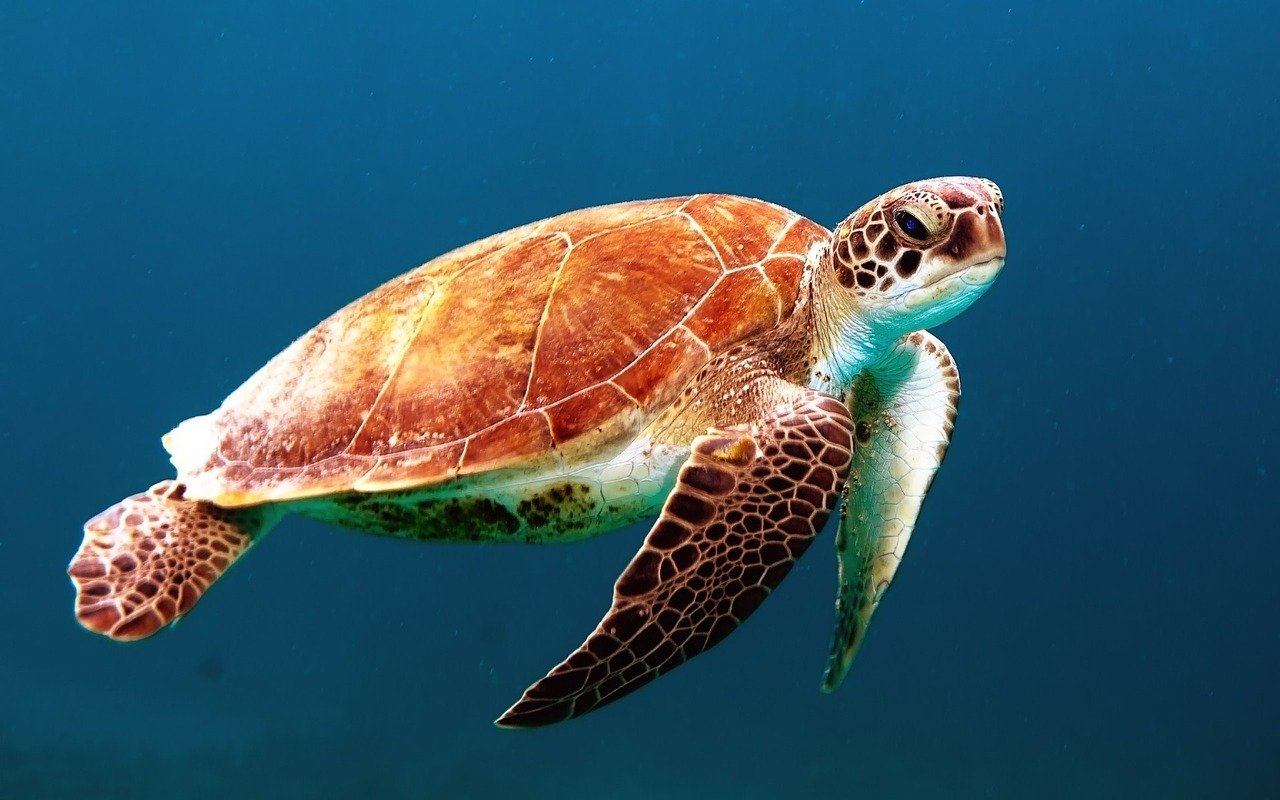Sea turtles represent a fundamental link in the chain of marine ecosystems. The seven existing species of marine turtles live in waters all over the world, from the coral reefs of the South Pacific Ocean, to the seagrass depths in the Indian Ocean, to the long stretches of seashore along the eastern Pacific’s coastlines. And today, six of those seven sea turtle species are listed as endangered, with three considered critically endangered.
Sea turtles are an extraordinarily migratory group of animals. They live part of their life cycle on land as they nest, and the rest of it in the oceans. Evolutionary contemporaries of the dinosaurs, they have populated the earth for some 110 million years. Yet, over the past two centuries or so, human depredations have taken an enormous toll on marine turtle species, with humans deliberately slaughtering the animals to use their skin, shells, eggs, and flesh. Human destruction of turtle habitats and the devastating effects of unchecked climate change are also pushing the animals farther down the road to extinction.
According to the World Wildlife Fund (WWF) and many other conservation organizations, the biggest threat to sea turtles around the globe is bycatch, which is the accidental capture of animals in fishing gear meant to ensnare fish and other food animals. Longline hooks, pots, driftnets, gillnets, and shrimp trawl nets capture an alarming number of turtles, including leatherbacks, loggerheads, and green turtles, each year.
Devastating losses
One study that looked at species death rates from bycatch found that about 40 percent of all animals caught up in commercial fishing gear and nets are discarded as “trash.” These needless deaths include not only sea turtles, but dolphins and sea mammals, sea birds, and other species as well. A 2010 Duke University research project estimated that up to 1.5 million sea turtles were caught up in fishing operations over 18 years.
A “circle” of protection for turtles
Through supporting educational programs and technological innovations in fishing tackle manufacture, the WWF works to stem these hazardous conditions with a multi-faceted strategy.
This includes encouraging the use of innovative types of fishing hooks. One new “circle” hook designed to use in Pacific longline fishing operations can lower the number of sea turtle deaths by 90 percent, even as it maintains effectiveness in the catching of food fish. Whereas the traditionally used “J-shaped” hooks may easily be swallowed and lead to internal bleeding or choking in turtles, a turtle is much less likely to ingest this “circle” hook.

Governments take action to help
The circle hook is drawing attention from government authorities as well. With costs to local longliner fishing fleets a barrier to adopting the circle hook, Ecuador rescinded an import tax on these types of hooks in 2012 after looking at information by the WWF. This action made the hooks a more competitive value for fishermen and broadened their usage.
To date, hundreds of fishing boats representing nine countries in the eastern part of the Pacific Ocean have opted to use circle hooks and safe techniques that avoid turtle bycatch.
Also, the WWF is testing new kinds of bait to see if that can lower the rate of turtle bycatch, as well as new tools to extract older types of hooks from turtles’ mouths.
Involving whole communities
Understanding that fishing communities themselves have a substantial role to play in the protection and conservation of sea turtles, the WWF is partnering with them to provide education on the best ways of caring for turtles and releasing them safely back into the wild.
For example, in the Coral Triangle (the western Pacific region surrounding Indonesia, Papua New Guinea, Malaysia, and the Philippines), the WWF has shown fishermen how to resuscitate turtles they happen to capture in their gear before returning them to the sea.
Taking environmental stewardship global
Another way in which the WWF has stepped in to help is by promoting the use of TEDs (turtle excluder devices) in shrimp trawlers. These devices allow sea turtles to slip safely away from the entanglements of shrimp nets. With the support of the WWF, the country of Mozambique in southeastern Africa established a law requiring the installation of TEDs in every vessel in its shrimping fleet.
The WWF estimates that, when fully implemented, this law will save the lives of thousands of sea turtles every year, and will further open American markets to Mozambican fishing companies.
The WWF’s work in Mozambique is only one more example of the organization’s effectiveness and reach in partnering with local and national governments, businesses, and trade groups like the Marine Stewardship Council (MSC) to take practical, achievable steps to lower the numbers of endangered sea turtles and marine mammals threatened by bycatch. The MSC’s logo on restaurant menus and pre-packaged seafood meant for consumers shows that a product has been produced under such safe standards.
